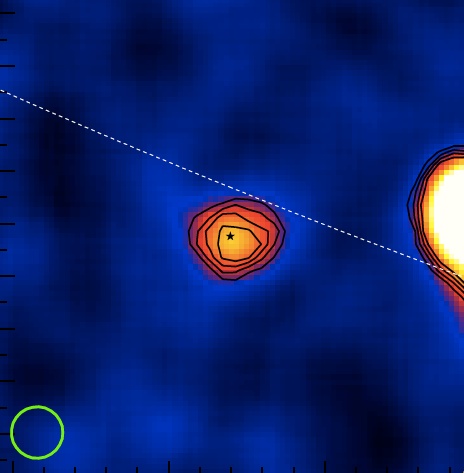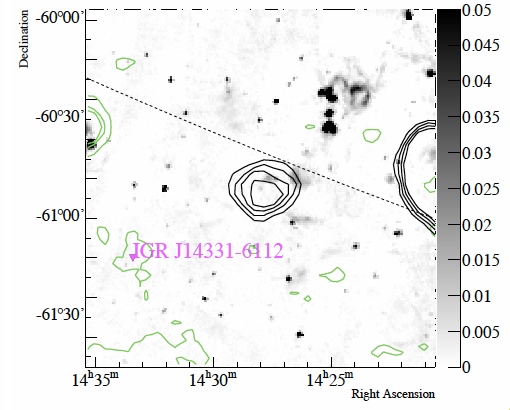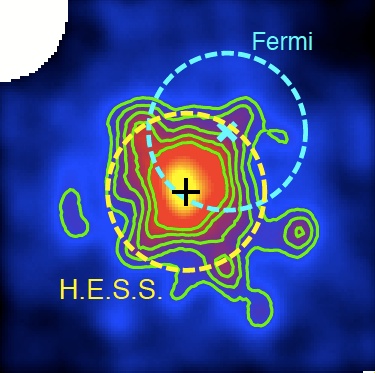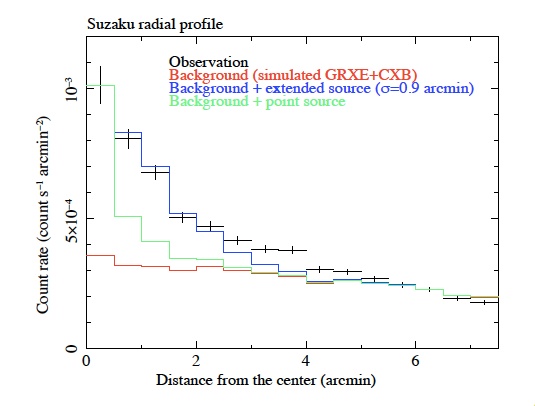HESS J1427-608 and - finally - its X-ray counterpart
May 2013

The very high energy gamma ray source HESS J1427-608 (top image) was discovered already in 2007 in the H.E.S.S. Galactic Plane Survey (Aharonian et al. 2008), as an unidentified source without X-ray or radio counterpart. HESS J1427-608 is an extended source of about 3' Gaussian width, and has a rather hard gamma ray spectrum extending up to tens of TeV. If the gamma rays orginate from an electron population, one would normally expect accompanying synchrotron radiation in the X-ray regime. At least in the ROSAT data none was observed (Fig. 1), making this one of the puzzling 'dark' gamma ray sources.
Only recently, Suzaku X-ray observations revealed a plausible counterpart - a coincident extended X-ray source - Suzaku J1427–6051 (Fujinaga et al., 2013), see Fig. 2. The X-ray radial profile has an extension of about 0.9' (Fig. 3); the X-ray energy spectrum has a spectral index of 3.1, steeper than the gamma ray spectrum with its index of about 2.2. The 2nd Fermi catalog also lists a GeV gamma-ray source consistent in position with the H.E.S.S. source and the Suzaku source. A plausible interpretation of HESS J1427-608 / Suzaku J1427–6051 is a pulsar wind nebula; gamma-ray and X-ray spectra and yields are consistent if the radiation originates from high energy electrons in a region with about 5 muG magnetic field, and are consistent with the range of values observed for other pulsar wind nebulae. However, lacking the detection of both pulsed emission from the pulsar and of a radio nebula, Fujinaga et al. also discuss a possible supernova remnant origin.
Reference:
"HESS very-high-energy gamma-ray sources without identified counterparts",
H.E.S.S. Collaboration, F. Aharonian et al., Astronomy & Astrophysics 447 (2008) 353
and "An X-ray counterpart of HESS J1427-608 discovered with Suzaku",
T. Fujinaga et al., arXiv:1301.5274


